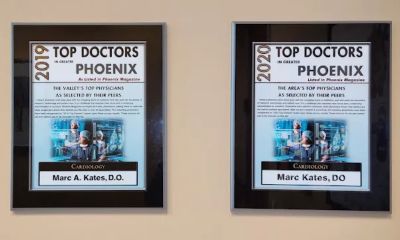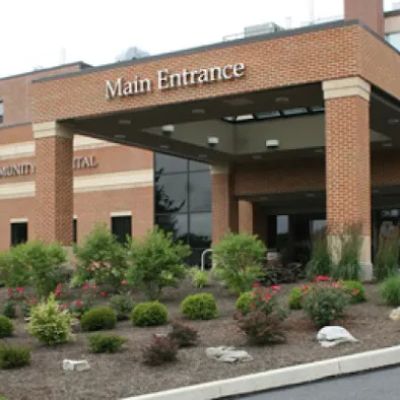The Role of Emergency Medical Services in Cardiac Events
Cardiac events, such as heart attacks and sudden cardiac arrests, represent some of the most critical and time-sensitive medical emergencies that individuals can experience. When a cardiac event occurs, the quick response of emergency medical services (EMS) can make a significant difference between life and death. But what exactly is the role of EMS in these situations, and how can they save lives? This article explores the vital function of EMS in cardiac emergencies, focusing on their role in timely intervention, advanced care during transport, and the collaboration between EMS teams and hospitals.

1. Understanding Cardiac Events and Their Urgency
Cardiac events encompass a range of conditions, but the most common and life-threatening include heart attacks and sudden cardiac arrests. A heart attack occurs when blood flow to a part of the heart muscle is blocked, causing damage to the heart. On the other hand, sudden cardiac arrest happens when the heart suddenly stops beating, often due to an electrical malfunction in the heart’s rhythm.
Both conditions are incredibly dangerous, with a heart attack potentially leading to severe damage or failure of the heart and sudden cardiac arrest resulting in death within minutes if not treated immediately. This is why immediate intervention is so crucial. The faster emergency medical services can arrive on the scene, the greater the chances of survival and recovery.
Cardiac Solutions
cardiac solutions
5651 W Talavi Blvd, Glendale, AZ 85306, USA

2. The EMS Response: Speed and Efficiency
Time is of the essence when dealing with cardiac events. Every minute counts, as delays in treatment can lead to irreversible damage to the heart or brain. The EMS team's primary responsibility is to get to the scene quickly and provide initial care while en route to the hospital. Their speed of response can be a decisive factor in improving outcomes for patients experiencing cardiac emergencies.
EMS teams are typically dispatched as soon as 911 is called, but the exact response time will depend on the distance, traffic, and local resources. The quicker they arrive, the sooner they can begin assessing the patient's condition and taking action. For heart attack patients, this often involves administering oxygen to improve blood flow and alleviating pain with medications like nitroglycerin. For those experiencing sudden cardiac arrest, CPR (Cardiopulmonary Resuscitation) and defibrillation may be necessary.
3. Advanced Life Support During Transport
Once EMS has stabilized the patient at the scene, they then begin transporting them to the hospital. During transport, the EMS team continues to monitor vital signs, administer medications, and perform procedures to keep the patient stable. This could include the administration of blood thinners for heart attack patients or medications to regulate heart rhythm for those experiencing arrhythmias.
One of the key aspects of EMS’s role in cardiac emergencies is their ability to provide advanced life support (ALS) during transport. ALS includes using equipment such as defibrillators to restart the heart, as well as intravenous (IV) lines for delivering medications quickly. These interventions are critical, as they help prevent further complications and maintain vital body functions while the patient is on their way to the hospital.
4. Coordination with Hospitals and Cardiac Teams
In addition to their own efforts, EMS teams play an essential role in ensuring that the hospital and cardiac care teams are ready for the patient’s arrival. As EMS teams transport the patient, they communicate vital information, such as the patient’s condition, medical history, and the interventions they've already performed, to the hospital staff. This allows the hospital team to prepare for immediate action upon the patient’s arrival.
One crucial example of this collaboration is the role of STEMI (ST-Elevation Myocardial Infarction) networks in heart attack care. In STEMI cases, EMS teams are equipped to perform an early diagnosis and transmit this information to the hospital’s cardiac catheterization lab. This enables the hospital to immediately perform angioplasty or other life-saving procedures when the patient arrives. This teamwork between EMS and hospitals dramatically improves survival rates for heart attack patients.
5. The Importance of Public Awareness and Early Intervention
While EMS plays a critical role in treating cardiac events, public awareness and early intervention are equally important. The sooner bystanders can recognize the signs of a heart attack or sudden cardiac arrest, the sooner EMS can be called to the scene. Teaching the public about CPR and the use of Automated External Defibrillators (AEDs) is vital in improving outcomes for those experiencing cardiac events outside of medical facilities.
In many areas, public-access defibrillator programs are becoming increasingly common, and there is a push for CPR training in schools, workplaces, and public spaces. By empowering individuals to act quickly and correctly, the chances of survival for someone experiencing a cardiac event increase significantly. Additionally, early defibrillation can often restore a normal heart rhythm and prevent permanent brain damage from a lack of oxygen.
6. How EMS Teams Are Trained to Handle Cardiac Emergencies
The training and expertise of EMS teams are pivotal to the effectiveness of their response to cardiac events. EMTs (Emergency Medical Technicians) and paramedics undergo rigorous training to respond to a wide range of medical emergencies, including cardiac events. This training includes CPR, advanced cardiac life support (ACLS), the use of defibrillators, and the administration of medications such as nitroglycerin, aspirin, and thrombolytics.
EMS teams also stay up to date with the latest research and advancements in cardiac care, ensuring they are prepared to provide the best possible care to patients. Regular drills, certifications, and continuing education ensure that EMS personnel are ready to handle any emergency that may arise, especially those as time-sensitive as cardiac events.
Conclusion: The Life-Saving Role of EMS in Cardiac Events
Emergency medical services (EMS) play a life-saving role in cardiac events, from quick response times to advanced care during transport and seamless coordination with hospitals. Their ability to act swiftly and effectively makes them a crucial component in the chain of survival for patients experiencing heart attacks or sudden cardiac arrests.
Understanding the importance of EMS in these emergencies can not only help individuals make quicker decisions when faced with a loved one in distress but can also inspire more widespread public awareness of cardiac health and CPR. With the proper education and resources, we can all contribute to improving survival rates and outcomes in these critical situations.
To learn more about heart care and how to prevent and respond to cardiac events, visit HeartCare Hub, where we provide expert resources and recommendations for the best care options available.





















Cooperman Barnabas Medical Center
cooperman barnabas medical center
94 Old Short Hills Rd, Livingston, NJ 07039, USA